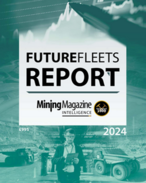Research and consulting firm GlobalData’s latest report projects the total capacity of nuclear power plants starting plant life extension (PLEX) programs globally to drop more than sixfold over the next decade, from an estimated 18.1 gigawatts this year to 2.9GW by 2025.
Several plant operators started PLEX for one or more of their reactors in 2010 and 2011, with 26 and 24 new programs implemented each year, respectively.
However, GlobalData expects these figures to decline over the coming years due to anti-nuclear public opinion following the 2011 Fukushima disaster – despite news last month that Japan had restarted its first nuclear reactor in two years with Kyushu Electric Power Company’s 846MW plant.
In July, France’s parliament approved President Francois Hollande’s plan to reduce the country’s reliance on nuclear power by 2025, aiming to reduce its use of nuclear from 75% to 50%.
Germany’s goal to phase out nuclear in favour of renewables has proven an expensive one, with its government’s subsidies to wind, solar and other renewable energy sources growing to €20 billion a year (just over $A32 billion at the current exchange rate) since 1991, when Germany first began the financial support.
Yet GlobalData believes a number of key nuclear countries like Germany, Belgium and Switzerland will decommission and disinvest in this power source and use alternatives to replace the equivalent capacity, with a preference for renewables.
Consequently, GlobalData’s senior analyst covering power Harshavardhan Reddy Nagatham said the global PLEX market value would also witness an overall decrease from approximately $US7.5 billion this year to $2.6 billion by 2025, although it will rise initially to $8.6 billion by the end of 2016.
“Demand for power is continuing to rise globally, especially in developing countries such as China and India, which have subsequently formulated extensive nuclear development plans to help fulfill the need,” the analyst said.
“The key advantage of nuclear power is its ability to produce large amounts of electricity suitable for serving the base load of a grid. It is therefore attractive to various emerging countries as a viable power generation option, which will in turn help drive their PLEX markets.”
However, Nagatham added that the overall trend towards renewable energy for cutting emissions means the global PLEX market outlook will remain negative to 2025.
“This will be most notable in Europe, where the capacity of NPPs starting PLEX operations is expected to drop almost sevenfold from approximately 8.3 GW this year to 1.2 GW by the end of 2025,” the analyst said.























